Injury Prevention and Optimal Mechanics in the Throwing Athlete
Learn something now! - Watch the Online CEU Course Trailer

All Access Online CEU for PT, PTA and OT for $189
BEST VALUE - Includes this course and all our online courses
Subscribe Todaytheaters Purchase Now, Instant Online Course Access
Injury Prevention and Optimal Mechanics in the Throwing Athlete
$175.00
- CE Hours: 8.0 hrs, .8 CEU
- Delivered: Online
- Instant Online Access, PDF Manual for Download, 365 days of access, Mobile Ready
- No auto-renewal for this option
All Access Online CEU for PT, PTA and OT
$189
All Access Online CEU for PT, PTA and OT Subscription
1 Year Access with Annual Renewal
State specific course completion certificates.
Chat support
Prices are in US dollars- 12 months of access to all online ceu courses, course tests and state approval certificates.
- Meet all your CE requirements. Pre-approved for PT, PTAs in AK, AL, AZ, CA, CO, CT, DC, DE, GA, HI, IA, ID, IL, IN, KS, MA, ME, MI, MO, MS, MT, NC, ND, NE, NH, NM, NV, NY, OR, PA, RI, SC, SD, TN, TX, UT, VA, VT, WA, WI, and WY.
- AOTA approved.
- Designed for Physical Therapists, Occupational Therapists, Athletic Trainers and Assistants.
- Access to future courses and content.
- Start, stop and resume, right where you left off in a course.
- Real patient interviews.
- Medical expert contributors.
- 3D anatomy and medical illustrations.
- Easy to use learning system for fast access to your courses.
- Award winning content.
- Top instructors teaching evidence based skills and techniques.
Why should a physical therapist, occupational therapist or athletic trainer take this shoulder injury continuing education course?
The end of the baseball season is typically synonymous with the end of winter; however, the pressure to train and compete for all year round has become all too familiar for many young athletes. Overhead throwing injuries are on the rise due to lack of sufficient training, proper mechanics, and appropriate throwing rest periods throughout the year.
Understanding the physical demands of the client throughout the year is essential indetermining an appropriate rehab program. This course will assist the clinician with looking at the individual overhead athlete'’s challenges, learn to evaluate based on their situation, and then develop an individualized treatment program.
Rehab clinical tools instructed in this overhead athlete injury continuing education course to enhance your functional outcomes.
- A thorough examination incorporating the whole body, the core, spine, legs feet, and the balance system
- A progression of return to play activities to assure a safe return to sport-specific activity
Specific instruction that will enhance your understanding and ability to deliver better patient care.
- The components of throwing mechanics and proper training techniques to minimize the risk of injury and to maximize performance
- Presentation of evidence- based progression parameters
- Prevention and treatment of shoulder and elbow injuries
- Rotator cuff progression
- Scapular progression
- Joint mobilization, soft tissue and manual therapy
Features unique to this shoulder injury rehabilitation continuing education course
- Techniques and parameters to return to play safely from the novice to higher athlete
- Case study presentations of two athletes; assessment and return to play protocols for the throwing athlete to return safely to the activity
- Demonstrations of activities/tests within the return to play criteria
- Description with slow motion analysis of the throwing arm and 3D muscle technology simulating throwing
Professional Accreditation
This is an advanced level course applicable for PT, PTA, OT, AT.Physical Therapy Accreditation: For specific state information use the accreditation verification menu and select your state of license. AOTA: provider #4487, Occupational therapy professional development activity: Occupational Therapy Service Delivery, evaluation and intervention, and Foundation Knowledge: human body, development, and behavior. Athletic Trainers: BOC provider #P2047, category A. This course has not been submitted for Evidence-Based BOC approval.
fact_check Accreditation Verification
Online CEU Course for PT, PTA, OT State Accreditation
Course Objectives

Upon successful completion of this course the participant will be able to:
- Discuss the theory behind the upside-down approach to an overhead athlete therapy exam.
- Utilize specific standardized testing tools to assess pain and disability.
- Perform a comprehensive subjective analysis with questions specifically relating to baseball players.
- Recognize postural abnormalities specific to a baseball player.
- Perform cervical tests to rule out cervical radiculopathy.
- Recognize hypermobility in the upper extremity and identify specific hypermobility which can lead to increased pain and injury in the overhead athlete.
- Perform special shoulder tests as it relates to the overhead athlete.
- Discuss the importance of specific ROM ranges needed in the shoulder and elbow for the overhead athlete.
- Discuss the total range of motion as it relates to external and internal rotation.
- Identify return to play criteria and the seven positions of replication testing.
- Discuss the evidence research regarding external to internal rotation ratios and the importance of positioning with training.
- Discuss the research and be competent with setting up the parameters and analysis results for the following tests: Closed Kinetic Chain Upper Extremity Test, Upper Quarter Y Balance Test, One Armed Seated Shot Put Test, Lower Quarter Y Balance Test.
- Perform functional performance index tests to determine the accuracy of the patient’s throw.
- Develop a program that analyzes sport specific training return to play protocols.
- Describe the progression for therapy to include manual therapy, soft tissue mobilization, stretching, strengthening, return to play activities. And throwing drills.
- Discuss the literature for soft tissue mobilization and its impact on long-term changes.
- Identify the major muscles involved with the performance of the overhead athlete and properly assess for tissue length, mobility and trigger points.
- Determine the appropriate shoulder rotation ratios and perform joint mobilizations to improve mobility.
- Describe scapular and rotator cuff progression and develop a comprehensive program to properly progress patient through a safe program.
- Describe the effectiveness of plyometrics and tits place in rehab progression.
- Describe the six phases of throwing mechanics and develop a program to safely incorporate throwing progression activities into a return to play rehab program.
- Describe the mechanics involved in the upper extremity and body with throwing motion.
- Explain the role of proper warm-ups and throwing drills for the success of the overhead athlete.
Learn from the Expert Eric Bellm, PT, DPT, OCS

Eric Bellm, PT, DPT, OCS is a physical therapist within the Orthopedic and Sports Division of Cincinnati Children’s Hospital Medical Center.
Eric is a graduate of the Doctor of Physical Therapy Program from Saint Louis University and a graduate from the Ohio State University’s Orthopedic Residency program. Dr. Bellm is a board-certified specialist in orthopedic physical therapy from the American Board of Physical Therapy Specialties. He specializes in the evaluation and treatment of overhead athletes, particularly baseball pitchers.
He is the lead therapist for the Thrower’s clinic at Cincinnati Children’s Hospital where he utilizes slow-motion video software to perform 2-D video throwing analyses for injured patients and uninjured clients seeking enhanced performance as a throwing athlete. He also serves as a mentor for the orthopedic and sports residency at Children’s. He has lectured locally and nationally, including the APTA Pediatric conference, on a variety of shoulder and elbow topics specific to the upper extremity athlete. He is currently working on research within the college and pediatric overhead athletes regarding different strength tests and their implications on a injury.
Two world class high school athletes as Case Studies
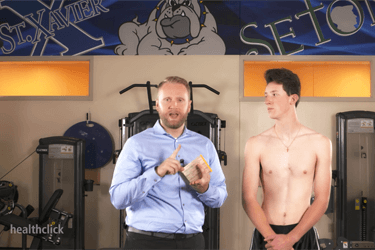
- Dr. Belm teaches using two actual high school athletes with throwing related injuries
- About 2-2 1/2 years ago, Mitchell started to notice a lot of elbow pain. When he would throw, he noticed a lot of aching pains all throughout my elbow and swelling, but he never thought it was too bad. He went to baseball showcase and was going all-out pitching at the showcase, and the next day, even that night, his elbow swelled up and in a lot of pain.
- Griffin had a shoulder injury playing football. He could not go through a night without waking up in shoulder pain. At football practice every day, he would be in pain and every movement was painful
Case Study Demonstrating Evaluation and Treatment Techniques
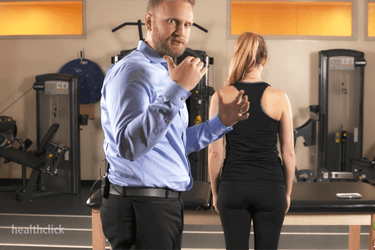
- Begining with the evaluation
- What is his strength?
- What is his range of motion?
- What do his shoulder mechanics look like?
- Are we missing an underlying ligamentous issue?
- Nerve length testing
- It is cool experience to always have, when this kid comes walking in and he’s like, “I can throw again.”
Evaluation of the Overhead Athlete
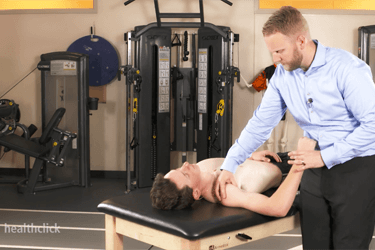
- Evaluation, Upside down triangle version.
- Looking at the whole person.
- Outcome measures, observations, screening test, specific test patient interview.
- Red flag questions, specific questions.
- How to “rule in” a diagnosis.
- Specific questions to ask baseball players.
- Quick DASH, SPADI Pain Score, KJOC
- Posture and arm motion
- Movement assessment
- Rule out fractures
- Clear the cervical region.
- Clinical prediction rule for cervical disc
- Spurling’s Test
- Cervical distraction
- Upper Limb Tension Test
Evaluation of the Overhead Athlete: Baseball Specific
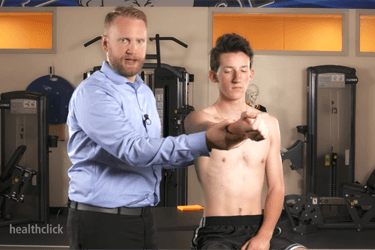
- Baseball specific tests. Hypermobility scale
- Baseball specific range of motion testing
- Retroversion
- Retrotorsion
- How to perform a manual test that best mimics an ultrasound test
- Total range of motion, what is pathological and what is normal?
- Special tests:
- Active compression Rotation Test
- Apprehension Test
- Speeds Test
- Relocation Test
- Crank Test, BIcep Load II Test, Resisted External Rotation Test
Treatment: Scapular Progression
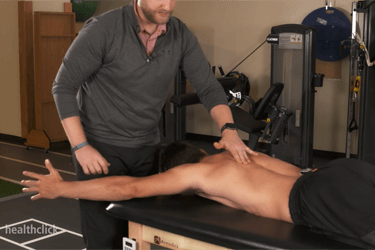
- Scapular progression for the lower trapezius
- Moving into a W position
- Rhomboids, mid trap
- Getting athletes into the overhead throwing spot
- Sports-specific tasks
- Progressing toward plyometric
- Starting with isometrics
Throwing Mechanics
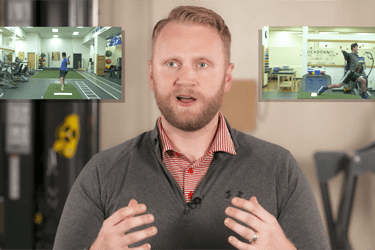
- The Dynamic Warmup
- True Slow motion Analysis of the Pitch
- The six phases of the throwing motion
- It is not just the arm, elbow,and shoulder
Treatment: Rotator Cuff Progression
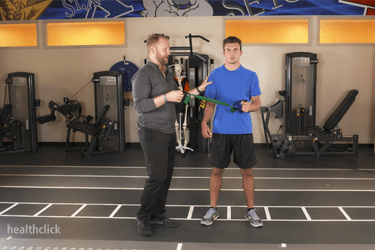
- Rotator cuff progression beyond isometrics
- Progression beyond Isotonic, baseball specific training
- Advanced strengthening phase of the rotator cuff
Course Test - Evaluate your knowledge

- Use the Healthclick proprietary online education system which provides the online student with:
- Worldwide access to high definition video, anatomical animations and images, and written information
- The highest quality film in the industry, you can see the difference!
- Stop and resume within a course, the Healthclick system will optimize your course based on your device, connection and remembers where you left off.
- Real-time course updates. We are always adding to each courses, updating content, adding animations, these are not static courses!
- Evaluate your knowledge with the course test on any device.
- Print your state course certificate for CE credit.
- Take the online test as many times as need in order to achieve a 70 % or greater score.
Responsible CME® - Online CEU Course Testimonials
67.225.255.111I enjoyed the way the information was broken down. It allows you to easily understand how to assess and progress the overhead throwing athlete. I liked that he taught the information with the assumption that many basic skills were already known. Very informative and would recommend for anyone wanting to gain a better grasp of overhead shoulder mechanics. -- Loren, PT